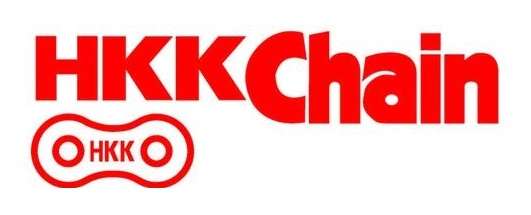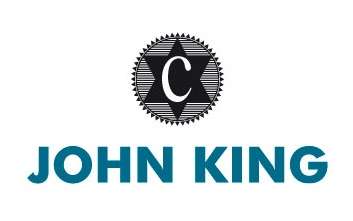
Chains and Sprockets
HVH Industrial offers various types of chains & sprockets, such as engineered steel, welded steel, roller, maxi, forged ones, etc. Chain is commonly used to transmit mechanical power on many kinds of industrial and agricultural machinery, including conveyors, wire- and tube-drawing machines, printing presses, cars, and more. Sprockets are used in bicycles, motorcycles, cars, tracked vehicles, and other machinery to transmit rotary motion between two shafts where gears are unsuitable or impart linear motion to a track, tape, etc.
Chains and Sprockets are essential accessories in all types of industrial works. HVH offers different kinds of sprockets and chains according to the preferences and needs of our clients.
HVH Industrial works with manufacturers' specialized engineering teams to meet our customers' requirements and highest quality standards.
If you have any questions, write us via live chat, (one of our team members will answer your questions), give us a call, or send us a quote request. The HVH team is always ready to help you.
 1(866)577-4040
1(866)577-4040
or
Chains and Sprockets
Manufacturers
What is a Chain
A chain is a series of metal links joined together to form a flexible connector. The first known chains are seen in sketches by Leonardo da Vinci as early as the 1500s. The chain is an efficient and simple method to transfer power using less energy. A chain drive operates in tension. Teeth on the sprockets engage the chain and apply a tensile load that pulls the chain links.
Types of Chain Links
Various types of standard and non-standard chain designs are available. Each type has its specific characteristics and applications. The main chain links are roller, engineering class, leaf, and forged chains.
Roller Chains
Roller chains have been used in power transmission applications for over a hundred years. In a roller chain, the pins pivot inside bushings. The bushings are press-fit into roller link plates, and the pins are press-fit into pin link plates. A roller chain consists of alternating pin links and roller links. To achieve rolling engagement and contact with sprocket teeth, a roller is placed around each bushing and is free to rotate. Roller chains are categorized according to their pitch length. The pitch is the distance between the centers of the pins. A bigger pitch indicates a bigger link size and a higher load rating. The leading roller chains are self-lube, heavy and super series, corrosion-resistant, silent chains, and double-pitch roller chains.

Self-Lube Roller Chains are used in applications where it is better to eliminate the costly and time-consuming practice of lubrication or when lubrication is not possible because of contamination and accessibility issues.

Another type of roller chain is the Heavy Super Series Chain. Heavy Series chains are used where space and weight limitations don't allow the use of bigger chains. These chains are designed to carry more loads and withstand shock loads. Heavy series chains provide longer chain life under severe loads. Enhanced plate configuration and ball milling plate holes ensure greater tensile strength and resistance to fatigue failure.

Also, a Corrosion-Resistant Chain is a type of roller chain that includes stainless steel, plastic, nickel, and zinc alloy chains, each used for a different purpose. These chains are primarily used in food processing plants, fertilizer plants, and waste management plants.

A Double Pitch Roller Chain is a chain with the exact dimensions of a standard roller chain but double the pitch size. A double-pitch roller is lighter and less expensive than a traditional roller chain because it contains half the number of pitches and offers nearly the same strength characteristics. It is mainly used for long-center-distance applications.

Silent Chains or inverted tooth chains consist of multiple links placed close to each other. A silent chain runs quieter, is more flexible, and can carry more horsepower per inch of width than another chain type. It runs smoothly with tiny vibrations because it is designed with teeth built into the chain that mesh with teeth in the chain sprocket. Silent chains are used in applications ranging from fractional horsepower to 1000 HP, depending on the pitch size. Silent chains are used in conveying applications and power transmission because they have a flat back.

Leaf Chains
A leaf chain consists of link plates like a roller chain assembled on the pins but without using the bushings and the rollers. The leaf chain is built utilizing a sheave because of the absence of sprocket teeth engagement. The pin diameters are press-fit into the two outermost plates, and the remaining plates are loose fit. Leaf chains offer high strength concerning weight per foot and are mainly used as counterweight chains for machine tools, elevators, and forklift trucks. Leaf chains require proper lubrication to achieve a decent service life.

Engineering Chains
Engineering chains are chains with a large pitch, and compared to other types of chains, they are designed to have more clearance and a higher safety factor. Engineering chains have been produced and used for over a hundred years and are designed to work in particular applications. Engineering chains are mainly categorized as drive chains, roller conveyor chains, bushed chains, and welded chains.

Drive Chains are a type of engineering chain designed with a small roller chain to improve interaction with the sprocket. Drive chains are constructed with bushing, pins, rollers, and sidebars. The chains have offset sidebars or straight sidebars. Applications are usually high-speed, with short distances between sprockets.

Roller Conveyor Chains are another engineering chain used to convey bulk material or parts. Most roller conveyor chains are designed with attachments to connect the carrying device to the chain. They are constructed of pins, bushings, sidebars, rollers, and attachments. The type of steel used and the hardness of the components vary with different chains.

Bushed Chains are also a type of engineering chain similar to roller conveyor chains but without rollers. They are designed with pins, bushings, sidebars, and attachments to connect the carrying device to the chain. Bushed chains are also used in applications to convey bulk material and parts. Cast combination chains are another type of bushed chain, but the inside links are cast and have no bushings.

Welded Chains are designed with pins, attachments, bushings, and sidebars, while the bushings are welded onto the sidebars of steel chains. The pins are used to couple the links together, and the attachments are welded onto the sidebars. Cast chains are similar to welded chains, but the main difference is that the links are cast, and the attachments are cast into the links instead of welded.

Forged Chains are considered one of the most reliable conveying mediums offering versatility, strength, and abrasion resistance. They are available in various versions such as the standard series forged link chains, double and triple series. Also, Drop-Forged Rivetless Chains are constructed with cast steel inner and outer links and heat-treated steel pins that make them strong, corrosion-resistant, flexible, and highly functional. They can be used in trolley systems and general and overhead conveying systems.

You can also check our article on the Advantages and Disadvantages of Chain Drives.
Sprocket
A Sprocket is a mechanical wheel made of steel or aluminum with teeth or small notches designed to rotate and engage with the links of a chain. The links of the chain and the sprocket should have the same thickness and pitch as the sprocket to function. A sprocket transmits a rotational movement between two shafts where gears are unsuitable or impart linear motion to a track. Sprockets are characterized by the number of teeth, outside diameter, pitch, pitch diameter, caliper diameter, length thru bore, and bore diameter.
The most common types of sprockets are:
Chain Sprockets are the most common type of sprockets used in bicycles where the pedal shaft carries a large sprocket that drives a chain, which in turn drives a small sprocket on the rear wheel's axle.

Small and Large Double Pitch Sprockets are similar to chain sprockets but with half the number of sprocket teeth. These sprockets convey applications where torque requirements are lower and the service life is more important.

Multiple Strand Sprockets are used in applications where high torque and power are required or when one drive shaft powers two or more items. A multiple-strand sprocket is longer than standard sprockets because of the bigger chain width.

Double Plus Sprockets are designed to work with a double plus chain. This type of sprocket is used in conveyor applications where the product on the conveyor is moved at double the speed of the system powering the conveyor. The main advantage of double plus sprockets is longer chain life and less noise.
Quick Disconnect Sprockets, also known as QD Sprockets, are sprockets with tapered bushings where bushings are flanged. QD sprockets are used in applications requiring high working and clamping loads. QD sprockets are easy to install, remove, and align the sprocket 90 degrees to the shaft.

Idler Sprockets are mainly used in applications when the chain experiences slack due to long length, non-adjustability of the drive shaft, or when the chain has to be guided around an obstruction. Idler sprockets prevent chain whipping and uneven distribution of loads. Idler sprockets are placed outside the chain in case of chain whipping applications.


































